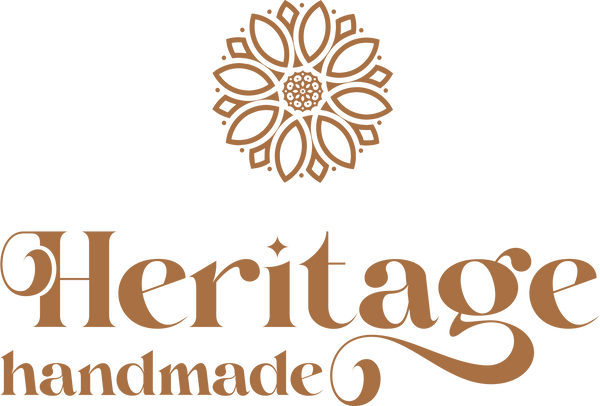
Best Place to get Unique vintage Moroccan kaftans & furniture
"In every stitch, every pattern, and every piece we create, we weave the spirit of Morocco – its colors, its warmth, its soul."
- Najoua, Founder of The Heritage Handmade

Family Business
Welcome to our family, where love and tradition come together to create beautiful handcrafted treasures. Join us on this heartfelt journey and discover the beauty and love woven into each handmade creation.

Let’s be friends.
Join the comunity with #theheritagehandmade
Frequently Asked Questions
For international orders, import duties and taxes are determined by your country’s customs and are not included in our prices at checkout. These fees must be paid by the customer upon delivery.
If a customer refuses to pay the required duties and taxes, the order will be returned to us. In this case:
The customer is fully responsible for the cost of return shipping and any import fees required for the package to re-enter Morocco.
Once we receive the returned items in their original condition, we will process the refund, minus all applicable return and re-import costs.
We recommend checking your country’s customs regulations before placing an order to avoid unexpected charges.
Heritage Handmade specializes in selling exquisite antique Moroccan home decor items, including large silver coffee tea trays and carved wood wall panels. Each product is meticulously handcrafted and showcases the rich heritage and craftsmanship of Morocco, adding a touch of elegance and authenticity to any space
Heritage Handmade is located in Morocco, specifically in Marrakech. While we primarily operate online, we will share our workshop address once it is open to the public. Additionally, we have a registered LLC company in the United States, based in the state of Montana.
At Heritage Handmade, we offer multiple channels through which users can reach out for assistance:
1. Email: Users can contact us via email at info@heritagehandmad.com for any inquiries, questions, or assistance they may need. Our dedicated team will promptly respond to emails and provide the necessary support.
2. Phone (WhatsApp): For immediate assistance or to speak directly with a member of our team, users can reach us via phone or WhatsApp at +212645878588. Whether it's a question about our products, an order inquiry, or any other assistance needed, we're here to help via phone communication.
3. Chat (Inbox): Users can also reach out for assistance through our chat feature, located in the inbox section of our website. This real-time messaging platform allows users to interact with our team members directly, ask questions, and receive instant support.
By offering these various communication channels, we strive to make it convenient for our customers to reach us and receive the assistance they need, whether it's via email, phone, or chat. Our goal is to provide exceptional customer service and ensure a seamless shopping experience for all.
To make a purchase at Heritage Handmade, simply follow these steps:
1. Browse our collection and find the product you wish to purchase.
2. Once you've selected your desired item, proceed to checkout.
3. During checkout, you'll be prompted to complete your purchase using PayPal. PayPal is the only payment method we accept, as it provides a secure and protected payment gateway for buyers.
4. Follow the instructions provided by PayPal to complete your transaction.
5. Once your payment is confirmed, your order will be processed, and you'll receive a confirmation email with details of your purchase.
If you have questions or encounter any issues while making a purchase, please don't hesitate to contact us at info@heritagehandmad.com or via WhatsApp at +212645878588. We're here to assist you every step of the way.
The products will be dispatched within 3 business days after your order has been placed.
We strive to ensure timely processing and shipping of all orders to provide you with the best possible shopping experience.
If you have any further questions or require expedited shipping, please feel free to contact us at info@heritagehandmad.com or via WhatsApp at +212645878588.
We're here to assist you.





































